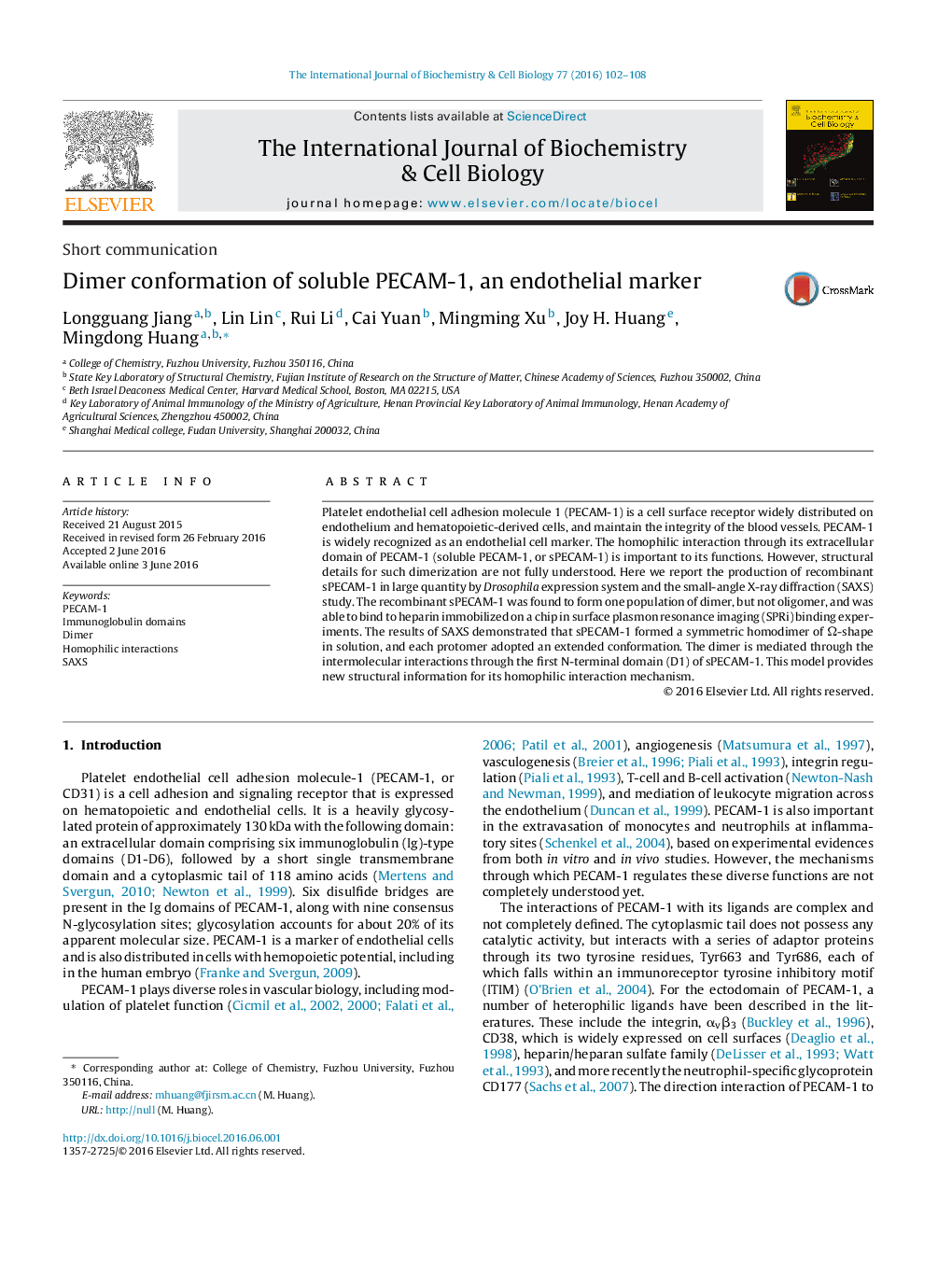| Article ID | Journal | Published Year | Pages | File Type |
|---|---|---|---|---|
| 1983331 | The International Journal of Biochemistry & Cell Biology | 2016 | 7 Pages |
•PECAM-1 is commonly-used as an endothelial cell marker. The structural details of homophilic interaction of sPECAM-1 are unknown.•Recombinant sPECAM-1 in large quantity by Drosophila expression system.•We observed the predominant presence of sPECAM-1 as a dimer on gel filtration chromatography and dynamic light scattering.•Small-angle X-ray scattering reveals sPECAM-1 is a homophilic adhesion protein. sPECAM-1 formed a symmetric homodimer of Ω-shape in solution.•The sPECAM-1 dimer is mediated through the intermolecular interactions through the first N-terminal domain of sPECAM-1 (D1).
Platelet endothelial cell adhesion molecule 1 (PECAM-1) is a cell surface receptor widely distributed on endothelium and hematopoietic-derived cells, and maintain the integrity of the blood vessels. PECAM-1 is widely recognized as an endothelial cell marker. The homophilic interaction through its extracellular domain of PECAM-1 (soluble PECAM-1, or sPECAM-1) is important to its functions. However, structural details for such dimerization are not fully understood. Here we report the production of recombinant sPECAM-1 in large quantity by Drosophila expression system and the small-angle X-ray diffraction (SAXS) study. The recombinant sPECAM-1 was found to form one population of dimer, but not oligomer, and was able to bind to heparin immobilized on a chip in surface plasmon resonance imaging (SPRi) binding experiments. The results of SAXS demonstrated that sPECAM-1 formed a symmetric homodimer of Ω-shape in solution, and each protomer adopted an extended conformation. The dimer is mediated through the intermolecular interactions through the first N-terminal domain (D1) of sPECAM-1. This model provides new structural information for its homophilic interaction mechanism.
Graphical abstractFigure optionsDownload full-size imageDownload high-quality image (240 K)Download as PowerPoint slide
